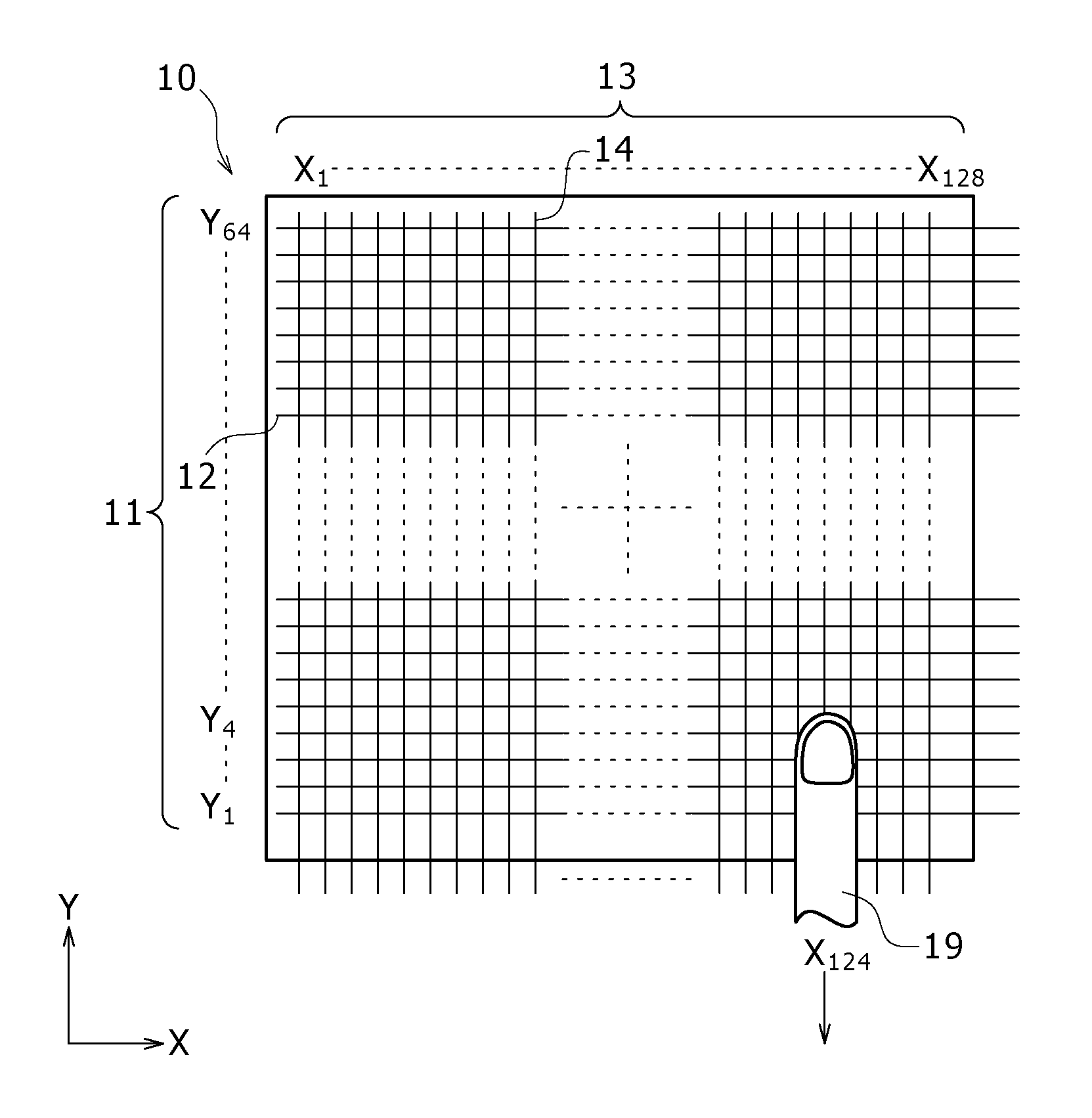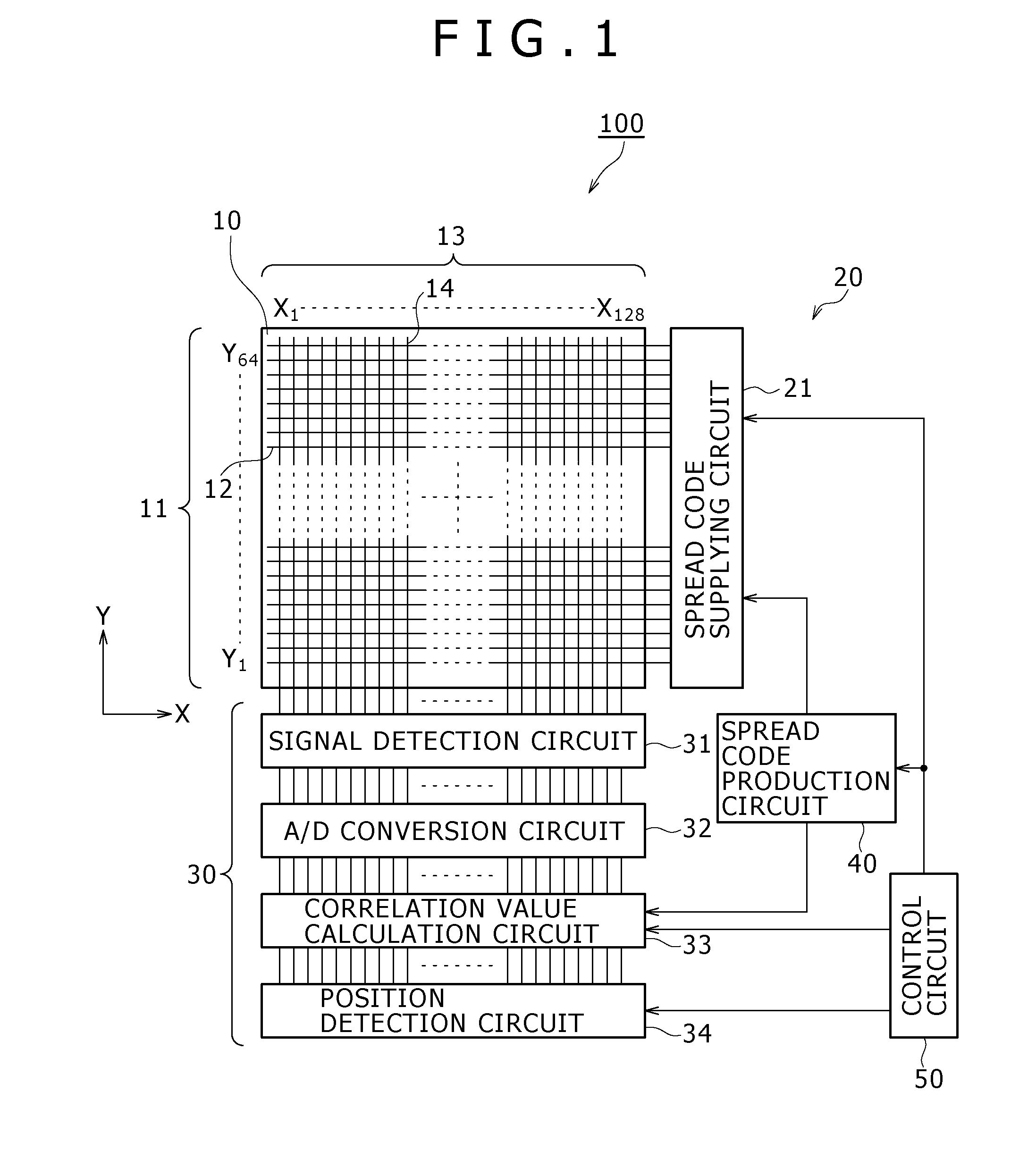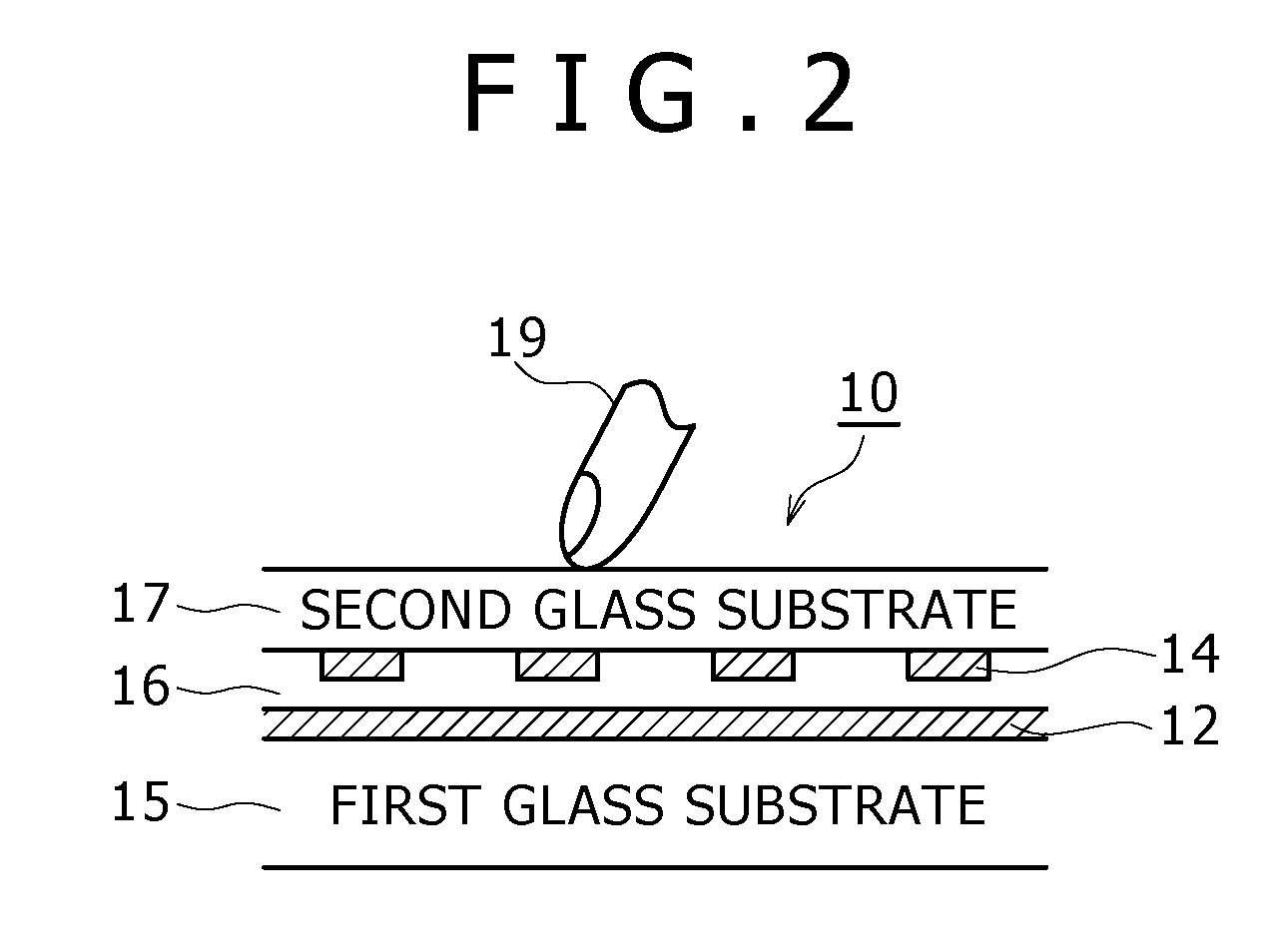Pointer detection apparatus and pointer detection method
a detection apparatus and pointer technology, applied in the field of pointer detection apparatus and pointer detection method, can solve the problems of inconvenient practical use of the pointer detection apparatus described above, and the long time required for detection at all cross points
- Summary
- Abstract
- Description
- Claims
- Application Information
AI Technical Summary
Benefits of technology
Problems solved by technology
Method used
Image
Examples
first embodiment
1. First Embodiment
[0103]In a first embodiment of the present invention, a basic configuration of an exemplary pointer detection apparatus and a pointer detection method of the present invention are described. An electrostatic coupling method for detecting the position of a pointer based on the variation of an electrostatic coupling state between a transmission conductor and a reception conductor of a sensor section is used in the present embodiment. Further, in the present embodiment, an example of a configuration is described wherein spread codes, each in the form of a code string, are supplied at the same time to all transmission conductors such that signal detection is carried out at the same time through reception conductors.
[Configuration of the Pointer Detection Apparatus]
[0104]FIG. 1 shows a general configuration of the pointer detection apparatus according to the first embodiment. A pointer detection apparatus 100 includes a sensor section 10, which is a conductor pattern, ...
modification 1
[Modification 1]
[0188]While the first embodiment described above illustrates an example where spread codes to be supplied to each correlator 33f and the transmission conductors 12 are produced using the spread code production circuit 40 and the shift registers in the spread code supplying circuit 21, the present invention is not limited to this particular implementation. The production of spread codes can be implemented also by providing the transmission section with a storage circuit formed from a ROM, or a random logic section wherein a predetermined logic function is formed by combining logic circuits such as an AND circuit, an OR circuit, an inverter, a flip-flop, or a like circuit, such that data to be supplied to the transmission conductors 12 is stored in and read out from the storage circuit. Further, the spread codes having the phase differences from each other may be stored in advance so that, upon position detection, signals based on the spread codes are supplied from the...
second embodiment
2. Second Embodiment
[0194]While in the first embodiment described above spread codes are supplied directly to the transmission conductor array 11, the present invention is not limited to this implementation. A signal obtained by applying predetermined modulation to spread codes may be supplied to the transmission conductor array 11. In a second embodiment described below, the pointer detection circuit is configured such that spread codes to be supplied to the transmission conductor array 11 are PSK (Phase Shift Keying) modulated.
[PSK Modulation]
[0195]FIGS. 20A and 20B illustrate waveforms of spread codes before and after PSK modulation. In particular, FIG. 20A illustrates a waveform of spread codes before PSK modulation and FIG. 20B illustrates a waveform of the spread codes after the PSK modulation.
[0196]In the embodiment described below, spread codes are PSK modulated with a signal of a clock frequency that is twice the clock frequency of the spread codes before the modulation (i....
PUM
 Login to View More
Login to View More Abstract
Description
Claims
Application Information
 Login to View More
Login to View More - Generate Ideas
- Intellectual Property
- Life Sciences
- Materials
- Tech Scout
- Unparalleled Data Quality
- Higher Quality Content
- 60% Fewer Hallucinations
Browse by: Latest US Patents, China's latest patents, Technical Efficacy Thesaurus, Application Domain, Technology Topic, Popular Technical Reports.
© 2025 PatSnap. All rights reserved.Legal|Privacy policy|Modern Slavery Act Transparency Statement|Sitemap|About US| Contact US: help@patsnap.com



